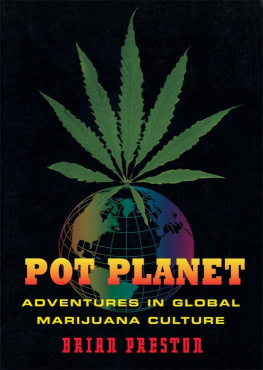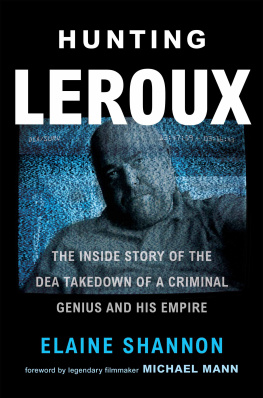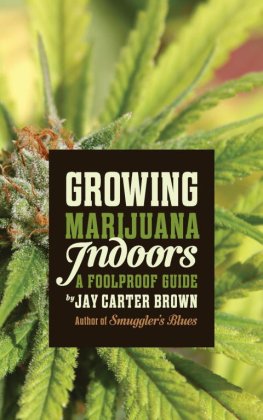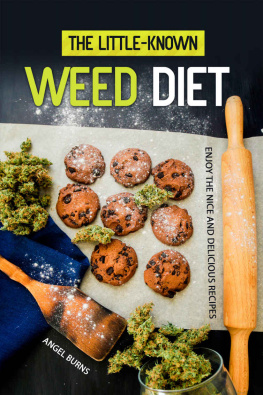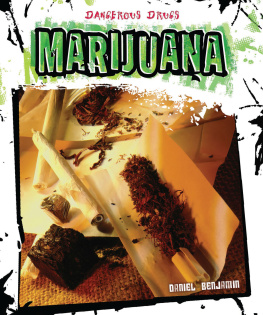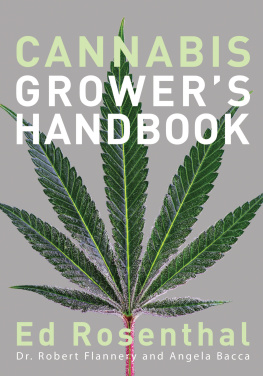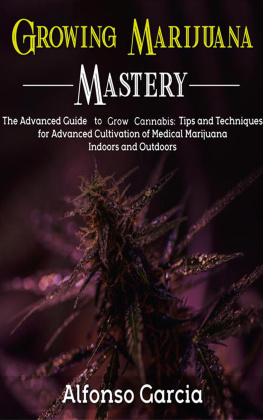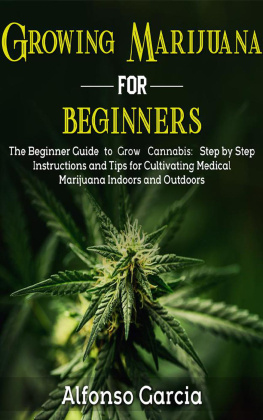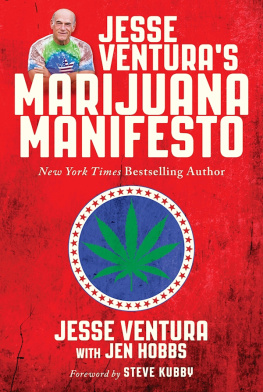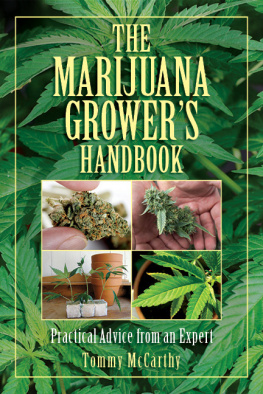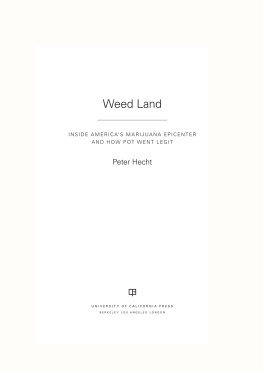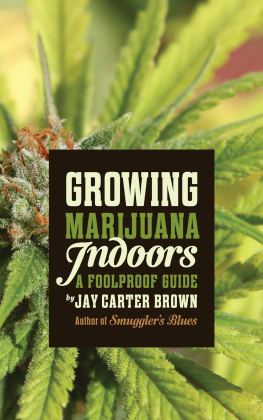


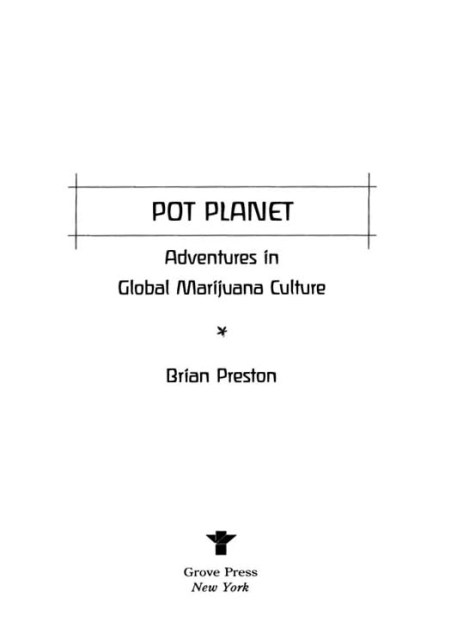
The names of certain people in this book have been changed, sometimes at their request. Parts of chapter 10 first appeared in Saturday Night magazine. Part of chapter 11 first appeared in the Vancouver Sun.
Copyright 2002 by Brian Preston
All rights reserved. No part of this book may be reproduced in any form or by any electronic or mechanical means, including information storage and retrieval systems, without permission in writing from the publisher, except by a reviewer, who may quote brief passages in review. Any members of educational institutions wishing to photocopy part or all of the work for classroom use, or publishers who would like to obtain permission to include the work in an anthology, should send their inquiries to Grove/Atlantic, Inc., 841 Broadway, New York, NY 10003.
Published simultaneously in Canada
Printed in the United States of America
FIRST EDITION
Library of Congress Cataloging-in-Publication Data
Preston, Brian, 1957-
Pot planet: adventures in global marijuana culture / Brian Preston.1st ed.
p. cm.
ISBN 9780802198204
1. Marijuana. 2. Cannabis. 3. Subculture. 4. Preston, Brian, 1957
Journeys. I. Title
HV5822.M3 P74 2002
306.1dc21 2001058499
Design by Laura Hammond Hough
Grove Press
841 Broadway
New York, NY 10003
02 03 04 05 10 9 8 7 6 5 4 3 2 1
To everyone who
gave me a light

He had discovered a great law of human action, without knowing itnamely, that in order to make a man or a boy covet a thing, it is only necessary to make the thing difficult to attain.
Tom Sawyer, by Mark Twain
There! there is happiness; heaven in a teaspoon; happiness, with all its intoxication, all its folly, all its childishness. You can swallow it without fear; it is not fatal ... You are now sufficiently provisioned for a long and strange journey; the steamer has whistled, the sails are trimmed; and you have this curious advantage over ordinary travellers, that you have no idea where you are going. You have made your choice; here's to luck!
The Poem of Hashish, by Charles Baudelaire


Four years ago Rolling Stone magazine assigned me to write a story about the marijuana culture of Vancouver, British Columbia. Vancouver had been my home for nine years, and although I was a moderate toker by local standards, I had something of a reputation with my stressed New York editor: I was the West Coast stoner dude.
Until then I hadn't considered myself part of any kind of pot community, any more than someone who picks up a six-pack thinks of himself as part of the beer community. I was a consumer, that's all, and pot was a product, a form of euphoria that came to me in convenient little plastic Baggies, in eighth or quarter ounces at a time. Sometimes it was good, sometimes it was mediocre, but I smoked it all regardless and never really worried too much about what variety it might be, or who had grown it, or where, or using what methods, any more than I would wonder about the dairy industry when buying a quart of homogenized milk.
Though I've smoked it on and off since 1976, I only really started thinking about marijuana seriously when, researching that magazine story, I ended up in a store called the Little Grow Shop in Vancouver. The shop sold hydroponic and other indoor growing supplies, and marijuana seeds over the counter, from the basement of a larger store called Hemp B.C., an upscale head shop selling bongs, books, rolling papers, pipes, hemp jeans, and tie-dyed T-shirts on West Hastings Street. Downstairs in the Little Grow Shop I had the strange feeling of being in some urban mutation of the rural farm supply outlets I'd known as a kidcomfortable places where farmers stood around and swapped talk about the crops. Even the manner of speaking was the samea clipped, minimalist farmer shorthand. The five staff members had varying experiences growing marijuana outdoors in swampy lowlands, dry prairie, hillsides and valleys; some had grown indoors, in soil or hydroponically, using chemical fertilizers or going totally organic. I learned a lot about growing pot just by eavesdropping at the counter:
We can't guarantee which are females. It's normal to get two or three males in ten seeds.
You're giving them way too much nitrogen.
Sativas grow taller than indicas as a rule.
You need a light, an exhaust fan, a reservoir to hold your water, soil, pots, nutrients, a good fertilizer, and good seed. For about a five-hundred-dollar start-up you can grow four ounces of pot every two months.
Absolutely everybody grows it differently, which tells you it's real easy to grow.
Surrounded by super-enlarged photo posters of richly resinous buds from strains like B.C. Kush, White Rhino, and Pearly Girl, the store's staff dispensed advice, while the owner, Marc Emery, held court from his desk in the back corner of the open room. He wore his hair in a dated, parted-down-the-middle cut that showed too much of a spacious forehead, and had a habit of squinting as if he were trying to keep his glasses from slithering down his nose, yet somehow Emery managed to exude a kind of charisma. Likely you remember someone from high school who was smarter than the teachers and took pleasure in letting them know it. Emery would be the forty-year-old version of that bratty kid.
He toked from a huge fattie consisting of a variety called Shiva Skunk, then lit up a personal favorite, a cross of two varieties, Northern Lights and Blueberry, but smoking huge quantities of reefer didn't seem to mellow him at all, as pot does most people. He kept up a caustic, funny patterhe doesn't so much talk as crowand since he was the boss, no matter how obnoxious or abrasive his opinions became, no one could tell him to shut up.
American farm boy types come in here often, he told me, and they'll stand there at the book rack, taking in the room over the top of a magazine for the longest time. Then suddenly a big smile comes over their face, and they'll burst out, Ah cain't buleeve what ahm seein here!'
His desk was a clunky old wooden schoolteacher's model with three cubic feet of drawers that contained the most intense concentration of marijuana genetics in North America. There were about three hundred little black film canisters in Emery's desk, each holding seeds of a unique marijuana strain, some back-bred to stability, others a first-generation hybrid. Many of these strains were local varieties that have given Canada's west coast a reputation for some of the world's best pot.
He wore a headset to take a constant stream of phone calls, and he was filling some of the $20,000 worth of mail orders he received each and every week, inlaying seeds in cardboard flats that he slid into envelopes bound most often for California and Australia. Our Commonwealth brothers in Oz are really into pot, he said. They're at the same stage of marijuana acceptance as Canada.
Next page
